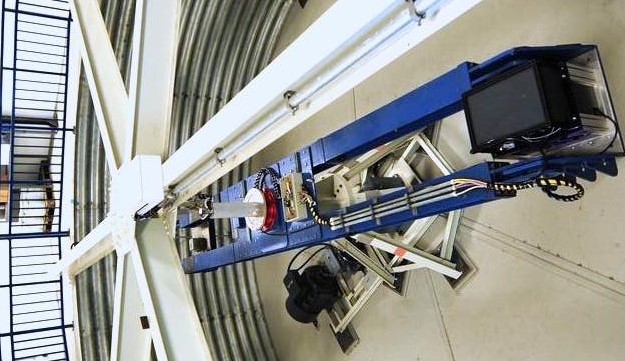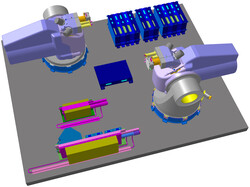

One of the biggest goals in modern physics is the unification of quantum physics and general relativity to a theory of quantum gravity. However, it is very hard to devise experiments in which both theories measurably contribute to the outcome. The main reason for this is that gravitational effects are observable either on cosmologically large scales or under very high accelerations, while quantum effects are dominant on a microscopic level. The Ursin group has tackled these problems with diverse approaches.
Space-QUEST: Entanglement in Space
The huge advantage of photons as carriers of quantum properties is that they can in principle travel arbitrarily long distances. Bringing a source of photonic entanglement into space allows for a plethora of experiments testing quantum physics on a macroscopic scale. Already in 2009, Rupert Ursin proposed the deployment of an entangled source on the ISS [1]. More recently, the Ursin group published a detailed mission proposal for testing decoherence effects in space [2].
Dropping and spinning sources
A way to test the existence of quantum correlations on earth is to either let a source fall or spin it around really fast. Although these are definitely not the gentlest ways to handle such delicate equipment, they are necessary to achieve zero gravity as well as many times the gravitational pull of earth. The Ursin group therefore designed an extremely robust source. First, we let it fall on a layer of mattresses from 12 meters height, where it felt no gravity during the fall; secondly, we put it in an industrial centrifuge where it rotated until it felt 30g [3]. In both cases, entanglement could still be observed, thus setting an upper bound for for acceleration effects on entanglement.
[1] R. Ursin et al., “Space-QUEST: Experiments with entanglement in space”, Eur. Physics News, EDP Sciences, Vol. 40, p 26-29, 2009
[2] S. K. Joshi et al., “Space QUEST mission proposal: Experimentally testing decoherence due to gravity,” Eur. Physics J. Spec. Issue Quantum Technol., Mar. 2017.
[3] M. Fink et al., “Experimental test of photonic entanglement in accelerated reference frames,” Nat. Commun., vol. 8, p. 15304, 2017.
